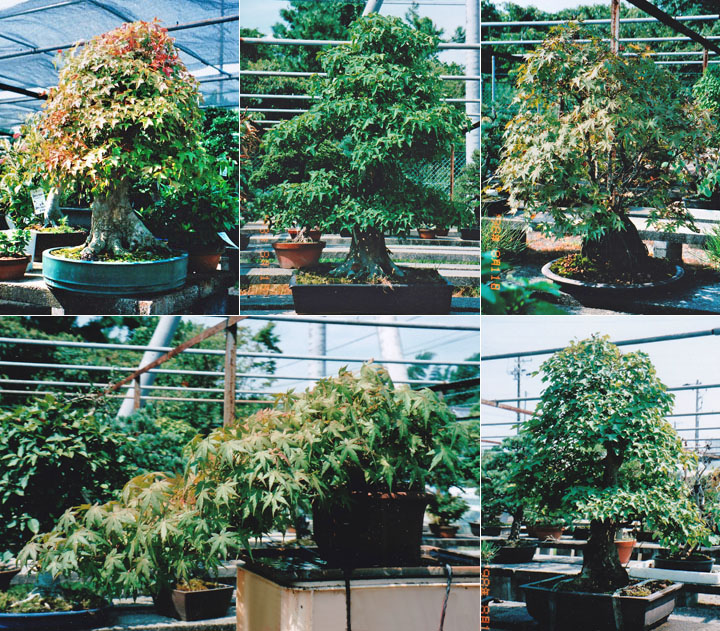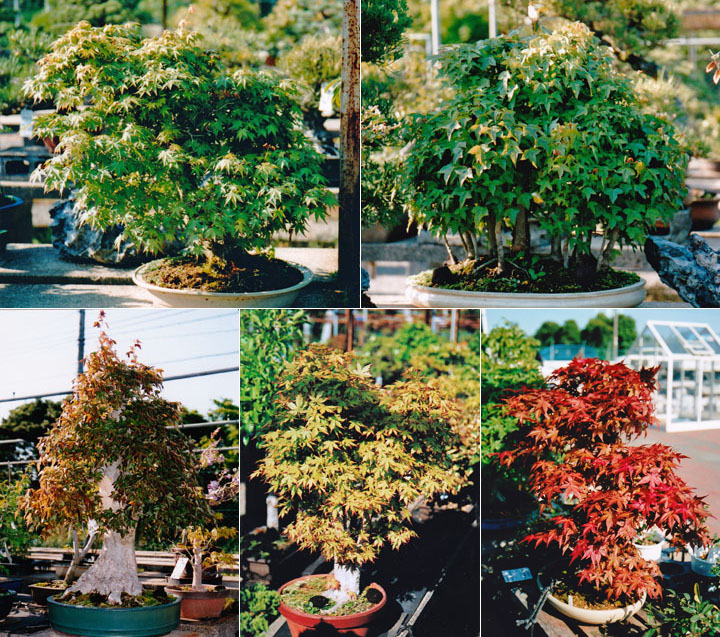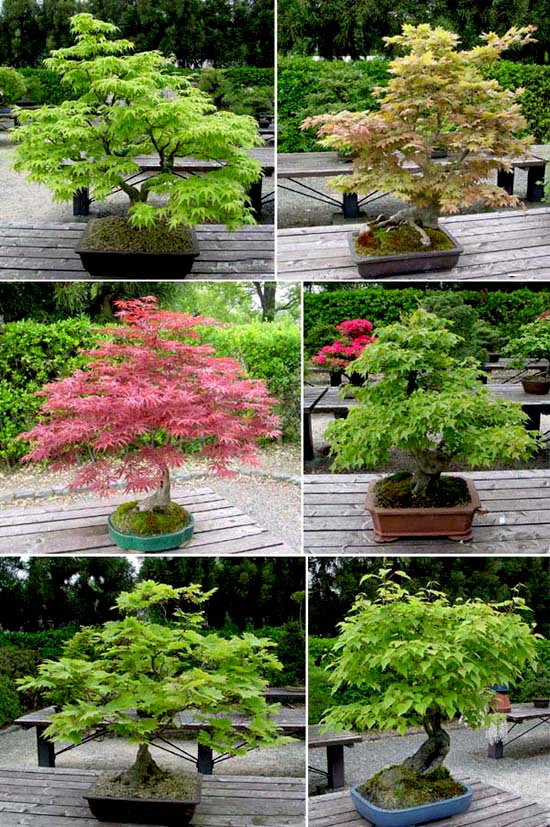13. Bonsai ........................................................................ Japanese
According to "Nyumon Zohki Bonsai" by Misumi Akira, bonsai is described this way:
Bonsai is to plant natural trees in a plate, to cultivate and to admire
them.
Bonsai's "Bon" indicates a shallow dish, "Sai"
means to cultivate,
and the following conditions are to be considered as
a whole :
The beauty of the natural landscape, the beauty of the twigs and leaves and the age sense fitted to itself.
And he says that if we always intend to improve ourselves in observing,
to know the character and the nature of the tree and to cultivate it with
love,
it will be sufficient for us all to make and enjoy Bonsai.
Miscellaneous
Bonsai signify chiefly that of deciduous trees,
which make us enjoy the
change of four seasons.
As for Bonsai are mentioned those trees, such as
keyakis, kaede(to-kaede), momiji (Japanese maples),
beech, elm, ginkgo,
mulberry, wax tree, ivy, etc.
Two words "kaede" and "momiji" are used in different meanings here in the Bonsai world.
As to how to cultivate young trees, terms mentioned include seedling,
cutting, grafting, layering and gathering in the mountains.
As the basic
shapes of the trees there are some types,
such as upright standing, slant
standing, twin trunks, full trunks, twin standing, full standing,
designed
trunk, cascade(cliff overhanging) and root connecting etc.
As the skills
of Shitate ( how to make), mentioned are such skills as tri-braiding,
grasping
and planting, Bonsai with stones, twig arranging and pruning,
bud nipping,
leaf trimming and wire setting etc.
(quoted from document No.21 : "Nyumon
Zohki Bonsai" )
The city of Hamakita is located on the north of Hamamatsu.
Hamakita is famous as a place of plants production.
I took some photos of bonsai at Ryokukaboku Center which is a plants market.

trident maple : typical upright standing(L & Center) & Yamamomiji on a rock(R)
Yamamomiji : semi-cliff overhanging(LL), trident maple : typical upright standing(R)

Upper Left : slant standing of Acer
matsumurae, Upper Right : gathering plants of Acer buergerianum
Lower L : Upright standing of Acer buergerianum, Lower Center : twin
trunks of Acer matsumurae
Lower R : Upright standing of f.chishio

UR : Kohauchiwakaede (Acer sieboldianum), CR : Tohkaede (Acer buergerianum),
LL : Hauchiwakaede (Acer japonicum), LR : Hananoki (Acer pycnanthum)
At The Kyoto Botanical Garden, May 01, 2005
In "Hana to Ki no Bunkashi" by Nakao Sasuke, Iwanami New books,
we can see the description on the transition and the development of Bonsai."Bonsai is already an international word as well as harakiri and kamikaze, but its origin comes from China. It seems to have appeared as Bonkei in the To era (618-907), since then it has been handed down to the present day. In the way of Bonkei they plant the tree in the pot, frequently adding stones to it. And some are composed of only strange stones in the pot, which they call Bonseki. Bonkei and Bonseki account for most part of Chinese Bonsai. At present in China we can often see Tako-tsukuri (octopus-like method) type of Bonsai composed of many curved branches. In old Japan, Bonkei and Bonseki can be seen in the picture scrolls of the Kamakura period (1192-1333) under the influence of Chinese culture. At present the type of "Natural Beauty Bonsai" accounts for almost all of Japanese Bonsai, and it is since the Meiji era that this type was perfected and has predominated." (my translation)